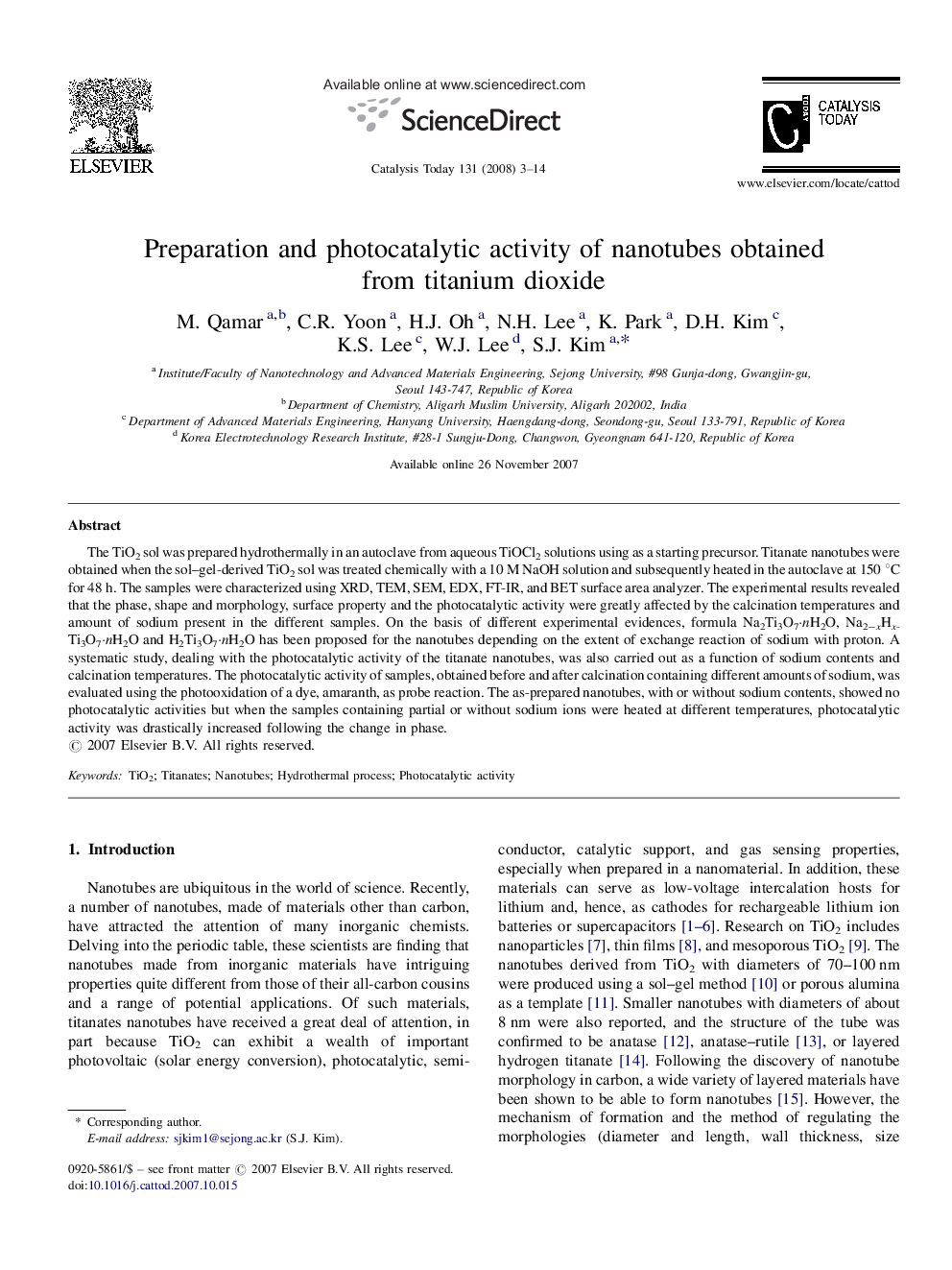| Article ID | Journal | Published Year | Pages | File Type |
|---|---|---|---|---|
| 57653 | Catalysis Today | 2008 | 12 Pages |
The TiO2 sol was prepared hydrothermally in an autoclave from aqueous TiOCl2 solutions using as a starting precursor. Titanate nanotubes were obtained when the sol–gel-derived TiO2 sol was treated chemically with a 10 M NaOH solution and subsequently heated in the autoclave at 150 °C for 48 h. The samples were characterized using XRD, TEM, SEM, EDX, FT-IR, and BET surface area analyzer. The experimental results revealed that the phase, shape and morphology, surface property and the photocatalytic activity were greatly affected by the calcination temperatures and amount of sodium present in the different samples. On the basis of different experimental evidences, formula Na2Ti3O7·nH2O, Na2−xHxTi3O7·nH2O and H2Ti3O7·nH2O has been proposed for the nanotubes depending on the extent of exchange reaction of sodium with proton. A systematic study, dealing with the photocatalytic activity of the titanate nanotubes, was also carried out as a function of sodium contents and calcination temperatures. The photocatalytic activity of samples, obtained before and after calcination containing different amounts of sodium, was evaluated using the photooxidation of a dye, amaranth, as probe reaction. The as-prepared nanotubes, with or without sodium contents, showed no photocatalytic activities but when the samples containing partial or without sodium ions were heated at different temperatures, photocatalytic activity was drastically increased following the change in phase.
